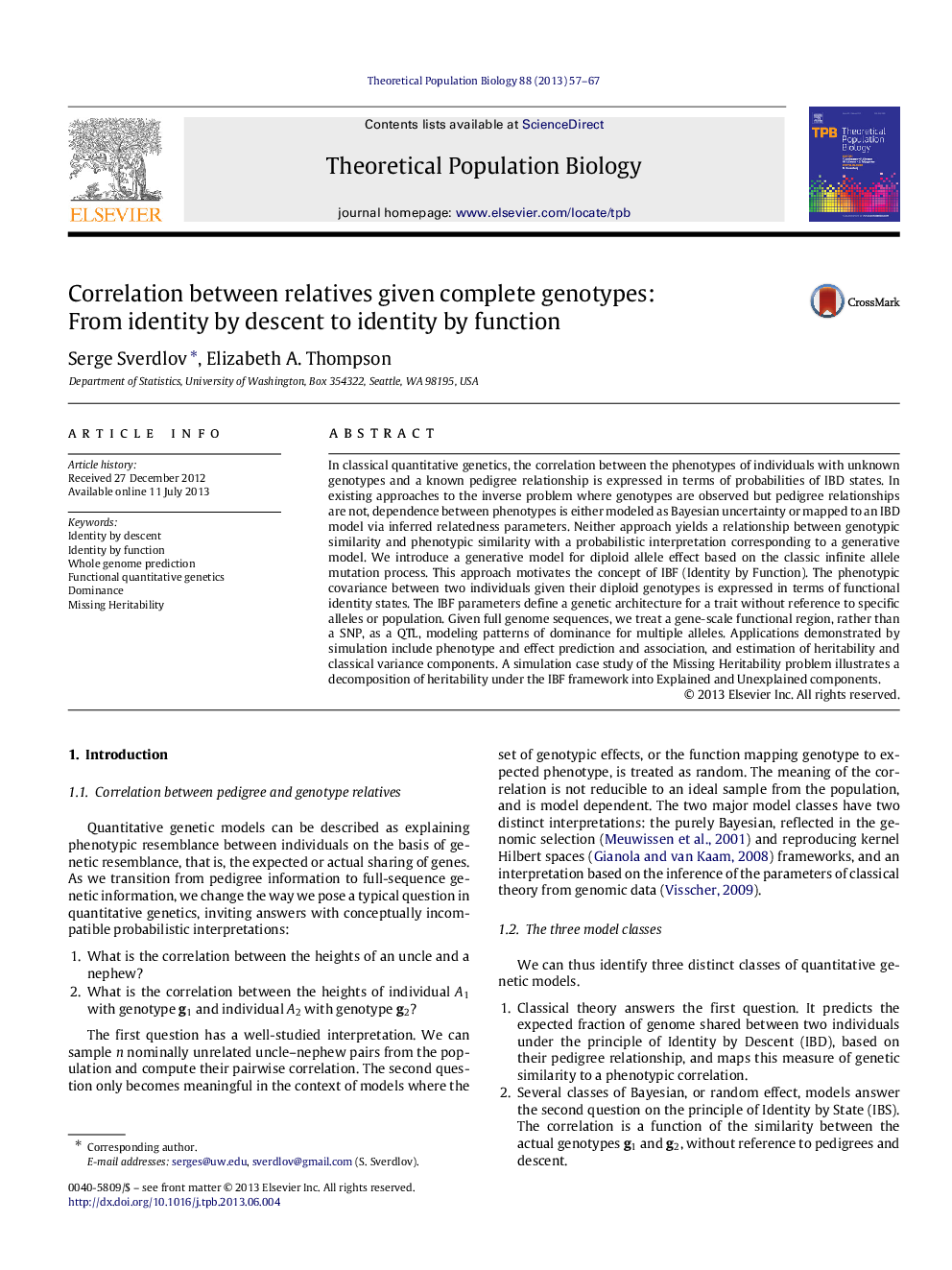| Article ID | Journal | Published Year | Pages | File Type |
|---|---|---|---|---|
| 4502440 | Theoretical Population Biology | 2013 | 11 Pages |
In classical quantitative genetics, the correlation between the phenotypes of individuals with unknown genotypes and a known pedigree relationship is expressed in terms of probabilities of IBD states. In existing approaches to the inverse problem where genotypes are observed but pedigree relationships are not, dependence between phenotypes is either modeled as Bayesian uncertainty or mapped to an IBD model via inferred relatedness parameters. Neither approach yields a relationship between genotypic similarity and phenotypic similarity with a probabilistic interpretation corresponding to a generative model. We introduce a generative model for diploid allele effect based on the classic infinite allele mutation process. This approach motivates the concept of IBF (Identity by Function). The phenotypic covariance between two individuals given their diploid genotypes is expressed in terms of functional identity states. The IBF parameters define a genetic architecture for a trait without reference to specific alleles or population. Given full genome sequences, we treat a gene-scale functional region, rather than a SNP, as a QTL, modeling patterns of dominance for multiple alleles. Applications demonstrated by simulation include phenotype and effect prediction and association, and estimation of heritability and classical variance components. A simulation case study of the Missing Heritability problem illustrates a decomposition of heritability under the IBF framework into Explained and Unexplained components.
